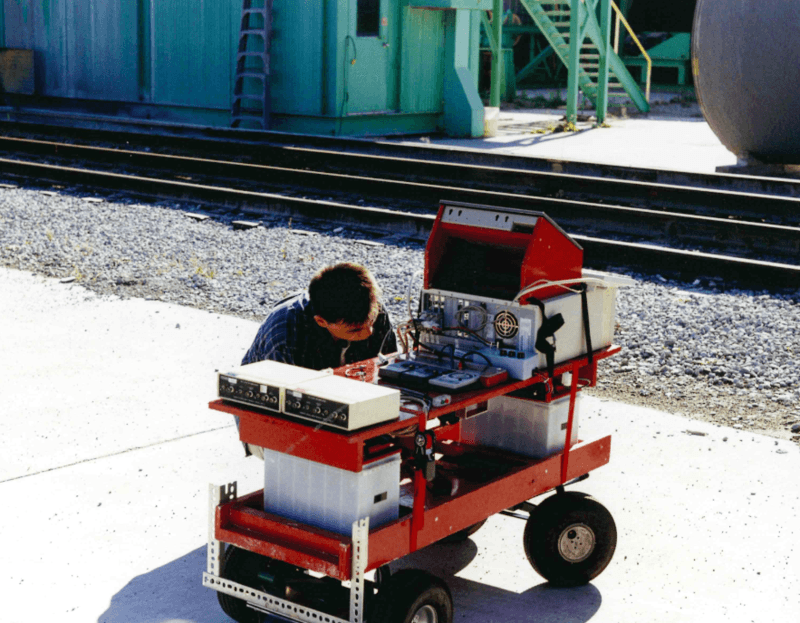
The Tarrant Regional Water District (TRWD) has been operating pre-stressed concrete cylinder pipelines for more than 45 years and protecting that particular aging infrastructure has been a priority. Pre-stressed concrete cylinder pipe has a thin steel cylinder to be watertight and is wrapped in wire to hold the pressure. After a series of failures occurred beginning in the late 1980s, the district conducted a root cause analysis of the failures and embarked on a mitigation plan. Over a five year period in the mid-90s, a cathodic protection system was installed using a galvanic system to protect the wires from further corrosion degradation. Then in 1999 the Pressure Pipe Inspection Company, now Pure Technologies, developed the tools needed to estimate broken pre-stressing wire wraps using electromagnetic technology. In addition, pump control valves were modified in 1995 with programmable logic to control the closing times, reducing the transient waves dramatically. Since then, the district has incorporated all of this data into failure risk analysis models to determine repair locations and condition assessment.

Fast forward to 2017, there’s smart watches, virtual reality headsets and the pipeline integrity program has vaulted into the future thanks in part to innovations by Dave Marshall, Engineering and Operational Support Director at TRWD. His deep understanding of pipeline functionality and vulnerabilities helped improve design standards over the years that pipe manufacturers now use today across the nation.
In 2017, a 9.7 mile section of 31 year old pre-stressed pipe in Richland Chambers Section 5 was up for annual inspection and district staff spent three days conducting the condition assessment with Pure Technologies. What they found was proof that the pipeline integrity program has been worth all of the effort. Of the 2,587 pipes that were inspected there were no wire breaks. “The inspection sections are five to ten miles at a time and we’ve never had a section register zero wire breaks, so that was pretty amazing,” said Courtney Jalbert, Infrastructure Integrity Manager with TRWD.

Now, the Richland-Chambers maintenance will be primarily focused on repairs at a 45° bend near the pump station. These repairs are due to structurally deficient pre-stressed pipe, not able to withstand the high pressure in this section. This is phase two of a project to remediate damaged pre-stressed pipes at bends in this section. In phase one, our operations staff installed internal welded steel to brace weak joints.
“We were excited that we don’t have to schedule additional repairs of pipes with broken wire wraps to ensure reliability when the Integrated Pipeline begins pulling water from the lake,” added Jalbert.
The Integrated Pipeline, IPL, is a new 150 mile steel pipeline. With lots of experience operating and maintaining the existing pipelines the district has used that experience to help design the new pipeline. Part of that design includes a galvanic cathodic protection system with magnesium anodes to achieve a –0.850v polarized potential, halting any corrosion. Also, with the importance of isolation in mind, isolation joints have been placed at transition points to protect both the old and new pipelines.
“A great deal of research has been done to ensure proper cathodic protection for the new steel pipeline which will extend its life even further, “ said Jalbert.
Thanks to the hard work and proactive approach of TRWD’s Engineering and Operations teams we’re extending the life of our pipelines and keeping the system steady. The IPL is on track as well, and we’re fortunate enough to have effective protection programs in place to keep our assets online and running for generations to come.


